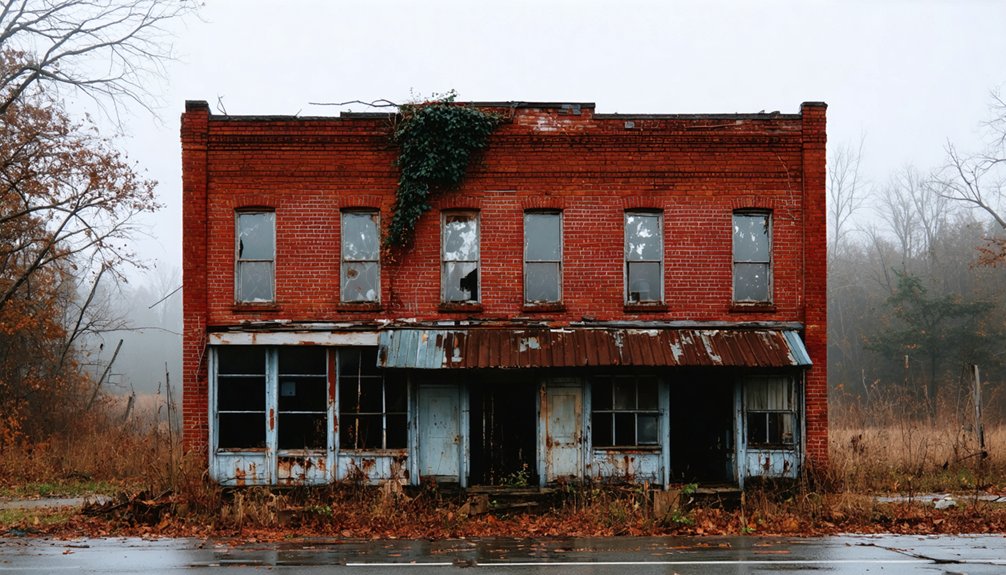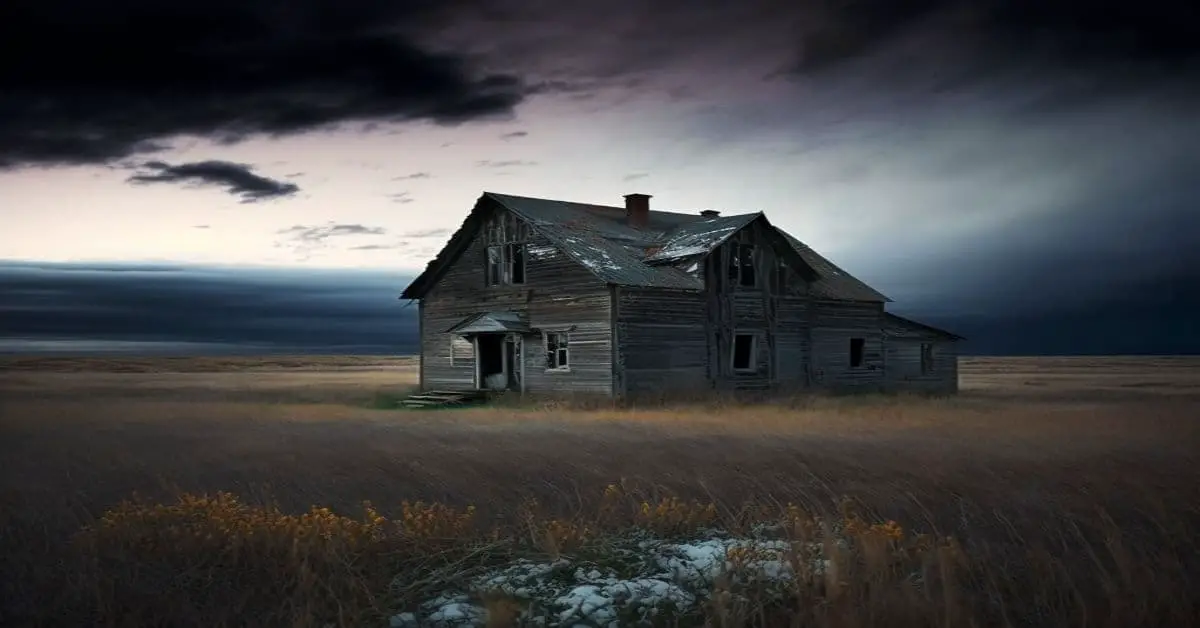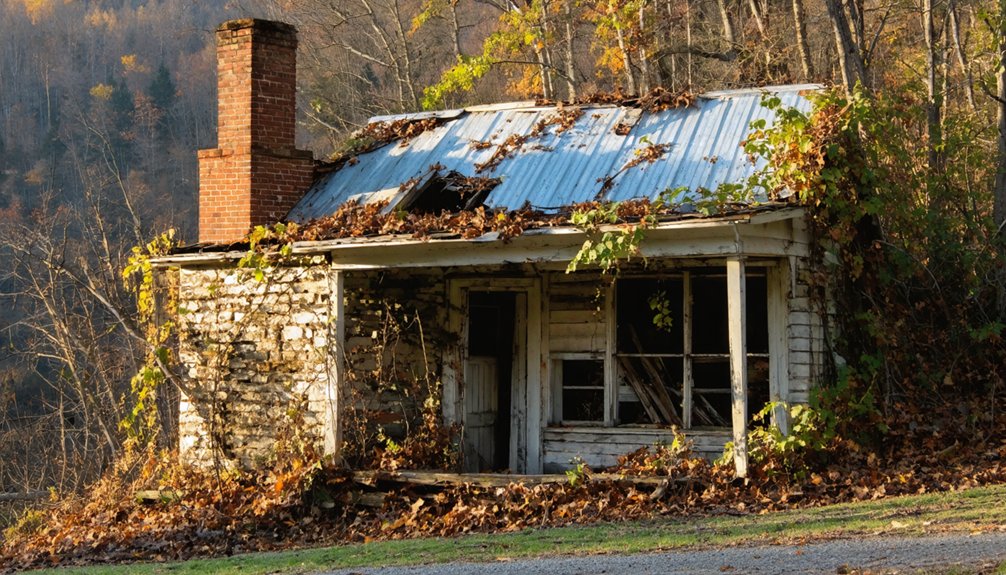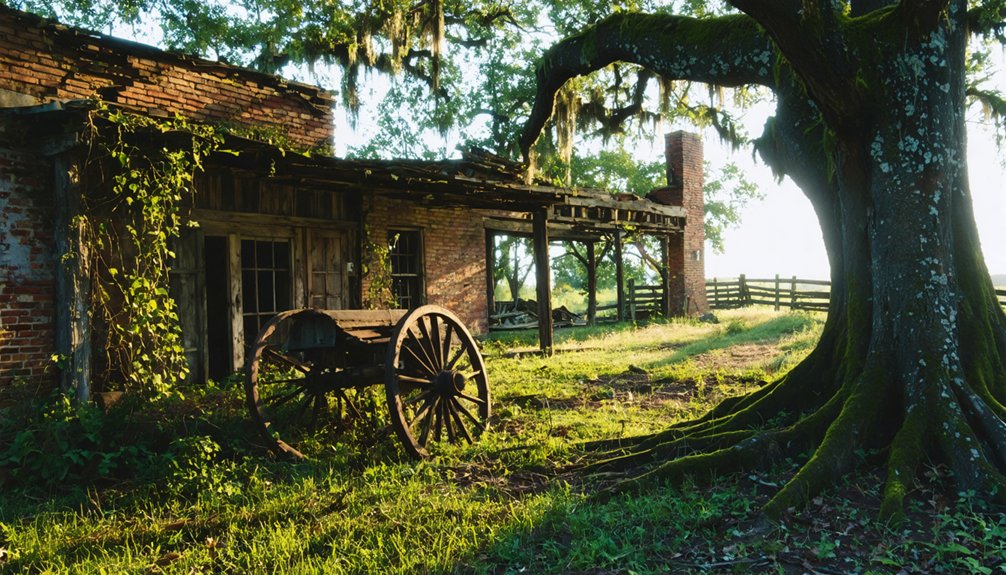You’ll find Kimberly’s remains at today’s Crater of Diamonds State Park in Arkansas, where America’s first diamond rush created a bustling frontier town in 1909. After John Wesley Huddleston discovered perfect diamonds on his farmland in 1906, thousands of prospectors flooded the 240-acre settlement. Despite grand plans and mineral wealth, diamond fever proved short-lived. By 1911, the town emptied, leaving only traces of its glittering past beneath Arkansas soil.
Key Takeaways
- Kimberly emerged in 1909 as a diamond boom town near Murfreesboro, Arkansas, following the discovery of diamonds by John Wesley Huddleston.
- The town grew rapidly to 240 acres within fifteen months, attracting numerous fortune seekers hoping to find diamonds.
- Despite initial enthusiasm and development plans, Kimberly’s prosperity was short-lived, with most residents abandoning the town by 1911.
- Commercial diamond mining operations proved unprofitable, leading to the town’s quick decline and eventual reversion to farmland.
- The former site of Kimberly is now part of Crater of Diamonds State Park, preserving the area’s mining heritage.
The Diamond Dreams That Built A Town
When John Wesley Huddleston purchased farmland near Murfreesboro, Arkansas in the early 1900s, he couldn’t have imagined his modest investment would spark one of America’s most intriguing diamond rushes.
After discovering perfectly formed diamonds of 3 and 4.5 carats in August 1906, his property quickly became the center of a transformative boom. You’d have witnessed thousands of prospectors flooding the area, drawn by dreams of striking it rich in America’s only diamond-bearing site.
The glitter of Arkansas diamonds drew hopeful prospectors by the thousands, all seeking fortune in America’s sole diamond-producing ground.
The Arkansas Diamond Company, led by banker Samuel Reyburn, bought Huddleston’s land for $36,000 and brought in advanced mining techniques from De Beers. The company faced financial troubles and ceased mining operations by 1912, leaving only a watchman to guard the site.
Despite finding thousands of diamonds, most were small and industrial-grade. The resulting town of Kimberly sprung up rapidly, complete with a bank, hotel, and stores serving the steady stream of fortune seekers. Millard M. Mauney’s vision for the area culminated in a grand lot selling event that drew eager investors in January 1909.
Life in Early Kimberly: Streets of Gems
In just fifteen months, Kimberly transformed from empty farmland into a bustling frontier town of 240 acres. You’d have witnessed streets teeming with fortune seekers, as diamond fever gripped this ambitious settlement near Murfreesboro.
The early community centered around the promise of mineral wealth, with John Wesley Huddleston – the original diamond discoverer – purchasing the first lot during the town’s grand opening in January 1909. Similar to how USS Kimberley ships carried precious cargo, the town’s streets held the promise of diamond riches.
Yet daily struggles soon emerged beneath the glittering surface. While M. M. Mauney’s carefully planned streets and lots promised prosperity, most buildings were temporary structures. The area’s rich deposits of various minerals including amethysts, garnets, agates, and quartz attracted many prospectors to the region.
The Short-Lived Boom and Swift Decline
Though Kimberly’s diamond-fueled ambitions peaked in early 1909, the town’s prosperity proved fleeting.
Your speculative investments in this Arkansas boomtown would’ve quickly turned to dust as the mining failures became apparent. By February 1910, you’d have witnessed investors abandoning their plans for an elaborate business complex and diamond enthusiasts’ club.
The venture’s rapid collapse manifested in these key developments:
- Commercial diamond testing yielded no profitable quantities
- The bank, hotel, and general store were ultimately abandoned
- Most residents and speculators fled by 1911
- The platted township reverted to farmland
The Conway Hotel rooms, without electricity or plumbing, turned away thousands of hopeful prospectors during the rush, highlighting the severe infrastructure limitations of the doomed settlement.
Like many former mining communities in Arkansas, Kimberly’s remnants are now barely visible, with little physical evidence of its existence.
The Mauney Family Legacy
Among Pike County’s earliest settlers, the Mauney family played a pivotal role in shaping the region’s diamond mining heritage. Their two-story home, built in the 1830s and featuring a lookout tier, still stands as Pike County’s oldest building near today’s Crater of Diamonds State Park. The site has become a popular destination for diamond exploration and attracts visitors seeking memories of Arkansas history.
Millard M. Mauney’s influence extended beyond his 23 diamond-bearing acres when he donated 80 acres for the town of Kimberly’s development in 1908. He was known for charging visitors fees to search his land for diamonds.
Mauney’s vision for Pike County stretched far beyond diamonds, as his generous land donation birthed an entire community.
While commercial mining ventures struggled on Mauney’s land, including his partnership with the Ozark Diamond Corporation, his legacy endures.
You’ll find traces of the Mauney heritage in the Kimberley addition along State Highway 301, and their preserved homestead serves as a symbol of Pike County’s diamond mining history and early settlement era.
Modern Echoes: From Ghost Town to State Park
Today’s vibrant Crater of Diamonds State Park stands where Kimberly’s ghostly remnants once lay, marking a remarkable evolution from failed mining venture to world-renowned tourist destination.
While the ghost town’s original buildings have largely vanished, you’ll find meaningful traces of its mining heritage preserved throughout the 911-acre park. The Conway Hotel’s records show the immense scale of the diamond rush, with over 10,000 potential guests turned away in a single year.
- The historic Mauney family house overlooks the park, standing as Pike County’s oldest building
- The original water tower from the diamond recovery plant remains as a silent sentinel
- Interpretive trails guide you through the area’s fascinating mining past
- “Uncle Sam,” the largest U.S. diamond at 40.23 carats, was discovered nearby
- https://en.wikipedia.org/wiki/Kimberly
- https://www.youtube.com/watch?v=VZHHr5is2Ks
- https://encyclopediaofarkansas.net/entries/kimberley-pike-county-7173/
- https://kkyr.com/these-3-arkansas-ghost-towns-are-just-a-road-trip-away/
- https://onlyinark.com/places-and-travel/arkansass-haunted-places/
- https://www.onlyinyourstate.com/experiences/arkansas/abandoned-ar
- https://en.wikipedia.org/wiki/List_of_ghost_towns_in_Arkansas
- https://kids.kiddle.co/List_of_ghost_towns_in_Arkansas
- https://en.wikipedia.org/wiki/Crater_of_Diamonds_State_Park
- https://www.familyjewelers.com/blog/2020/Sep/09/history-diamond-crater-state-park/
The park’s historical preservation efforts guarantee that Kimberly’s story lives on, as thousands of visitors annually experience the thrill of searching for diamonds where early prospectors once sought their fortunes.
Frequently Asked Questions
What Was the Average Lot Price in Kimberly During Its Peak?
You’ll find that while the exact lot values aren’t specified, they commanded high prices during Kimberly’s peak due to their historical significance and the diamond mining speculation in 1909.
Did Any Diamonds Actually Get Discovered Within Kimberly’s Town Limits?
All that glitters isn’t gold – or diamonds in this case. You won’t find any verified diamond discoveries within Kimberly’s town limits, despite the area’s rich mining history and proximity to actual finds.
How Many Original Buildings From Kimberly Still Stand Today?
You won’t find any of Kimberly’s original commercial buildings standing today – despite historical preservation efforts, none survived. The only building with architectural significance nearby is the 1830s Mauney house, which wasn’t part of Kimberly.
What Happened to the Three-Story Hotel After the Town’s Abandonment?
Ever wonder about those old ghost sightings? You won’t find them here – the hotel wasn’t renovated or repurposed. After investors fled in 1910, it was completely dismantled, leaving no trace behind.
Were There Any Schools or Churches Established During Kimberly’s Brief Existence?
You won’t find any schools or churches in Kimberly’s history – the town’s brief three-year existence and rapid decline prevented the establishment of these essential community institutions.



